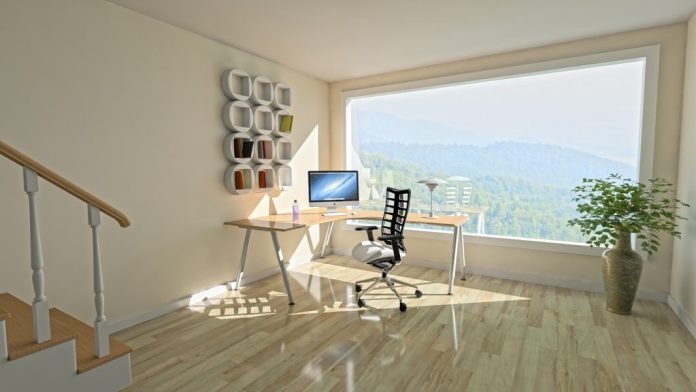Poor indoor lighting makes spaces look smaller, colder, and harder to live in. You don’t always need to install expensive fixtures or rely on artificial light. Small adjustments to your home layout, surfaces, and surroundings can improve natural light flow.
Natural lighting helps you save energy and supports better sleep, mood, and productivity. Platforms like Sweat Sign often highlight how home environments impact personal wellness. A few thoughtful changes to your indoor lighting can have a noticeable effect.
This guide shows how to improve indoor lighting using practical, low-cost ideas.
1. Maximize Window Exposure
Windows are the primary source of daylight indoors. To let in more light:
- Keep window areas clear. Avoid placing large furniture in front of them.
- Use curtain rods that extend beyond the frame. This allows full exposure when curtains are open.
- Choose sheer curtains or blinds that diffuse light without blocking it.
- Clean your windows regularly. Even thin layers of dirt reduce brightness.
For darker rooms, consider replacing small windows with taller ones or adding sidelights if possible.
2. Use Light-Colored Walls and Ceilings
Wall color affects how light spreads. Dark shades absorb light. Light shades reflect it.
Choose white, off-white, or pale neutrals for:
- Walls
- Ceilings
- Window trims
- Door frames
A matte finish diffuses light better than a glossy one. In rooms with low natural light, paint the ceiling pure white for maximum reflection.
3. Add Mirrors Strategically
Mirrors bounce light around the room. Place them:
- Opposite or near windows
- Behind lamps or light sources
- On dark or narrow walls
Large mirrors work best in small spaces. Try mirrored furniture or metallic decor for added reflection without major design changes.
4. Choose Reflective Surfaces
Certain materials help distribute light naturally. These include:
- Glossy tiles
- Lacquered furniture
- Glass tables
- Shiny backsplashes in the kitchen
- Polished stone like quartz or marble
Incorporate them in small ways to increase brightness without needing extra lighting.
5. Use Transparent or Glass Interior Doors
If your layout allows, swap solid doors for:
- Glass panel doors
- Frosted glass for privacy
- Sliding doors with light-permitting panels
These allow light to pass between rooms, especially in apartments or older homes with narrow halls.
6. Open Up Your Floor Plan
More open space allows more light to move. You don’t need full renovations to achieve this.
Try:
- Removing bulky shelving units
- Using open bookshelves
- Swapping full walls for room dividers
- Replacing tall furniture with low-profile pieces
This creates clean sight lines and makes natural light travel further.
Resources from Guide Promotion show how simple layout changes boost energy flow and light quality in compact interiors.
7. Add Skylights or Solar Tubes
Skylights bring daylight directly into the ceiling. Solar tubes use mirrors to direct sunlight into rooms without needing a full window installation.
These are best for:
- Bathrooms
- Hallways
- Attic conversions
- Kitchens with limited wall space
While the cost is higher, the long-term energy savings often balance it out.
8. Use Light-Colored Flooring
Just like walls, floors affect brightness. Lighter wood, tile, or vinyl reflects light more effectively.
If changing the flooring is not possible, use large, light-toned area rugs in:
- Living rooms
- Bedrooms
- Entryways
This creates the same visual effect and boosts ambient light.
9. Keep Clutter Away from Light Paths
A cluttered room absorbs more light. Maintain clear walkways and open corners. Use storage boxes and built-in units to minimize visual obstacles.
Keep items below window height and remove tall stacks of books, plants, or boxes near windows.
This improves airflow and enhances both brightness and mood.
10. Choose Smart Furniture Placement
The way furniture is arranged affects how light travels. Position sofas, tables, and chairs to:
- Avoid blocking natural light
- Leave a gap between walls and larger furniture
- Use glass or low-profile tables to let light through
Keep tall bookshelves or wardrobes on walls opposite windows, not beside them.
11. Use Indoor Plants That Don’t Block Light
Plants bring freshness to any room, but large ones can darken a space. Select smaller, air-purifying plants that sit on windowsills or shelves, such as:
- Snake plant
- Aloe vera
- Peace lily
- Pothos
- ZZ plant
Avoid placing plants where they cast heavy shadows across workspaces or seating areas.
12. Remove Heavy Window Treatments
Replace:
- Thick drapes with linen or cotton
- Blackout curtains with light-filtering panels
- Layered window coverings with simple shades
If you need privacy but still want brightness, consider frosted glass film or top-down-bottom-up shades.
13. Reorganize Wall Decor
Heavy wall art or dark frames can reduce visual light. Instead, try:
- Artwork with white or neutral backgrounds
- Frames in light wood, silver, or white
- Canvas instead of glass to reduce glare
- Smaller groupings rather than large block arrangements
Decor should complement natural light, not block or absorb it.
14. Clean Light Fixtures and Bulbs
While this tip isn’t about natural light, clean fixtures help amplify available light in darker hours. Dust bulbs, wipe shades, and clean lamp bases to prevent dimming.
Choose soft white LED bulbs to match natural daylight for consistency during transitions from day to evening.
Final Thoughts
Improving indoor lighting doesn’t always require an electrician or costly upgrades. With small, intentional changes, you can make rooms feel larger, brighter, and more livable.
Start with the easiest fix in your home: declutter, clean your windows, and reposition your mirrors. Then work your way up to bigger changes like adding a skylight or repainting walls.
Small details create a lasting effect on how your home feels and functions throughout the day.

